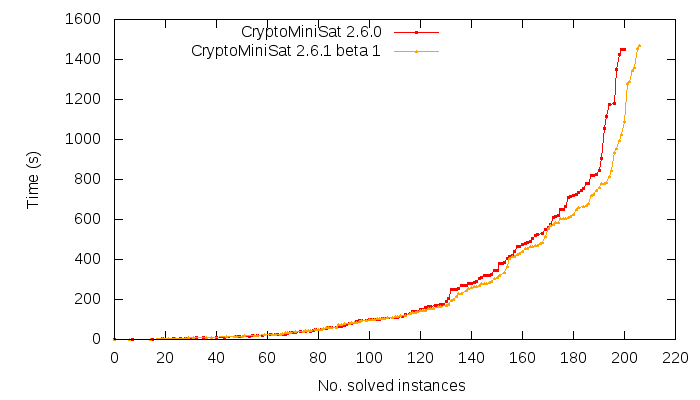 Documenting code is not always so much fun. However, in order for the code to be extended by others, documentation needs to exist. Since I conceived CryptoMiniSat as a program to be extended by others, documentation was a must. So now, after investing about 2 weeks into documentation, it is finally ready. All major classes have been documented, along with all major functions and internal data structures. The number of comment lines I added is around a thousand, all in the Doxygen format. A preliminary HTML version is available here. I hope the quality of the documentation will improve with time, and that others might correct and add more documentation as they update the program.
Documenting code is not always so much fun. However, in order for the code to be extended by others, documentation needs to exist. Since I conceived CryptoMiniSat as a program to be extended by others, documentation was a must. So now, after investing about 2 weeks into documentation, it is finally ready. All major classes have been documented, along with all major functions and internal data structures. The number of comment lines I added is around a thousand, all in the Doxygen format. A preliminary HTML version is available here. I hope the quality of the documentation will improve with time, and that others might correct and add more documentation as they update the program.
While documenting the code, it occurred to me that certain variable and function names were really awkward, or reflected the state of the class from an earlier version of the code. These variables and functions have been renamed, and some even removed, since they served no purpose other than making the code bigger for no reason. I have also found a number of TODOs while going through the code: sometimes I implemented things the fast way instead of the correct way, so some data structures are really strange, slow, or both. The sourcecode with all the documentation is available here, from the gitorious code repository. I will soon make a 2.6.1 release that contains not only this newly added documentation, but other additions as well.

 There is an
There is an